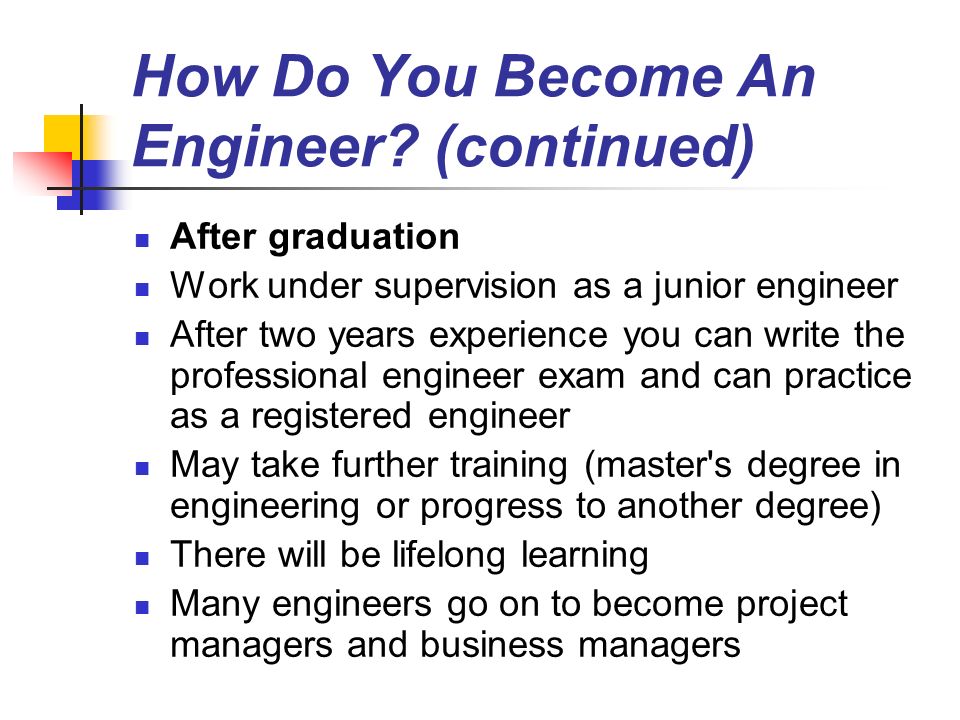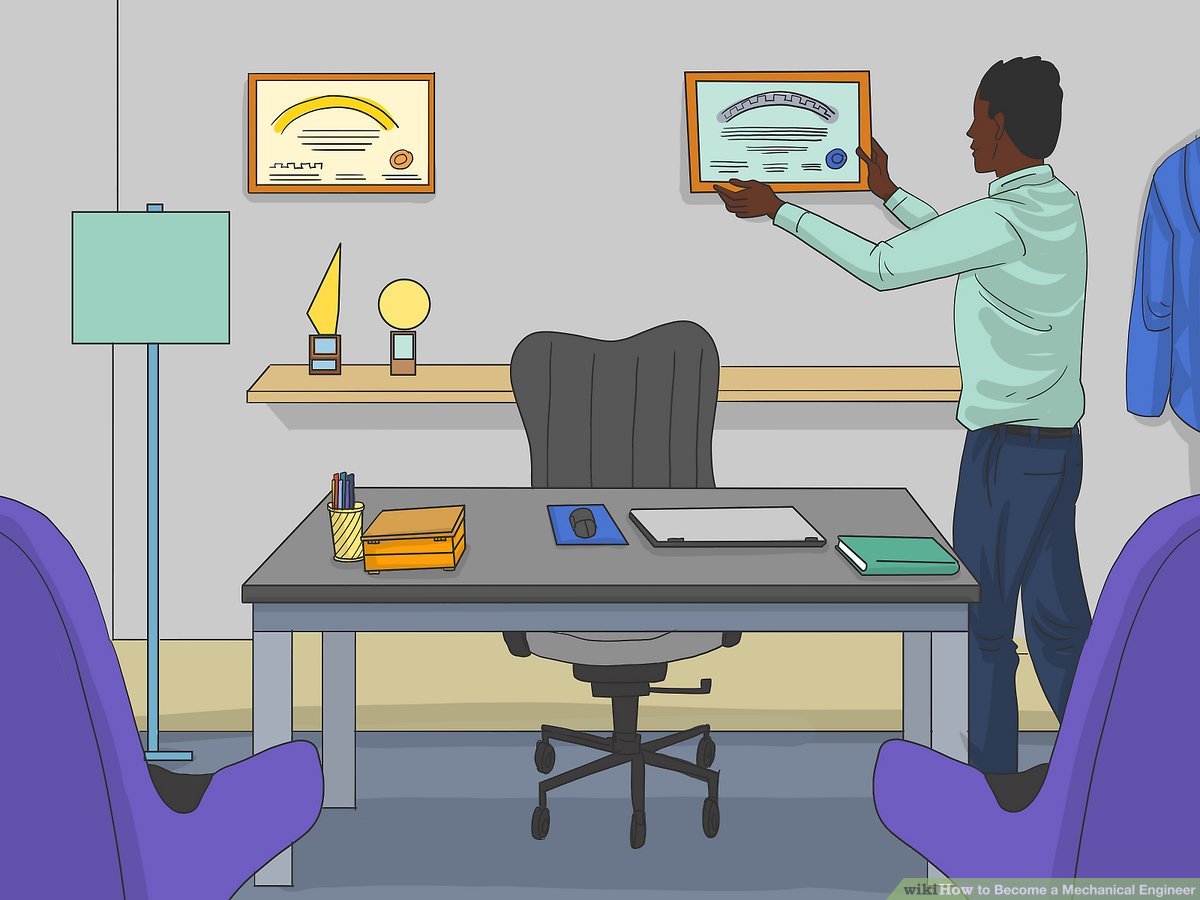
A safety engineer works in the field of safety, developing and implementing integrated management systems. This job requires an in-depth knowledge of laws, standards, and management systems. They must also be knowledgeable in the relevant technologies. The following outlines the requirements and job duties for safety engineers. To become a safety engineer, you must have a Bachelor's degree in engineering.
Job duties for a safety engineer
The job of a safety engineer is to identify and analyze hazards in the workplace, and then report on them. They also investigate occupational diseases and conduct accident investigation. Other duties include the analysis of statistical data and interpretation of safety regulations. Safety engineers also design safety features for products and processes to reduce employee and environmental exposures. They test machinery and equipment to make sure they are safe.
Safety engineers may work in an office, or out on the job. They inspect machinery, buildings, tools, or processes in order to avoid accidents. They may also collaborate with other safety professionals to improve safety procedures. Safety engineers can be found in the field designing and testing underground mine equipment. They could also be responsible to manage rescue teams.

Safety engineers also work with designers to ensure products and processes are safe. They can be responsible to create new procedures and processes and present them to managers. They might also organize seminars or plan training classes for employees.
Education requirements
Safety engineers require a wide range of education because they are responsible for developing an integrated management system that prevents injuries and accidents. The safety engineer role requires an in-depth knowledge of safety legislation and systems. This role requires interpersonal skills as well as a deep knowledge of safety standards, legislation, and systems. This article will discuss the most important education requirements for safety engineers.
You will typically need a bachelor's in engineering. Some universities offer specialized programs in safety and healthcare. The Accreditation Board for Engineering and Technology will accredit the program you choose. Also, a master's degree is helpful in safety and health. This will give you more work experience and help you get hired.
You will also need to have strong computer skills. Safety and health engineers must be able to integrate different systems and anticipate changes in human behavior. Along with technical skills, you will need to have a strong work ethic. You must conduct regular reviews, maintain records, guide workers, and implement countermeasures that prevent accidents. Strong communication skills are also required to communicate effectively with others, interpret safety regulations, discuss their purpose, and design training materials.

Job outlook
Safety engineers perform many tasks, including creating an integrated management platform. This position requires an in-depth knowledge of all relevant standards, laws, and systems. A safety engineer will also be responsible for developing and implementing safety programs. This includes helping with the creation of a safety policy or risk assessment tool.
As a safety and health engineer, you can make a career out of it. You are responsible for the safety and well-being of people, products, buildings, and the natural environment. As a health- and safety engineer you can apply your creative problem-solving skills across a range of problems. In addition, the career comes with excellent benefits and competitive pay. Below is a sample job description for those who are interested in this career. It will give you an idea of the types of work employers are looking for.
A variety of environments are available for health and safety engineers, including industrial plants, laboratories, office buildings and offices. They might also be required to travel across the United States for work. Some jobs require overtime. They use scientific and statistical tools to ensure the safety of workers and improve environmental quality. They will also need to be proficient using CAD software and computer assisted design.
FAQ
What does an electrical engineer do?
They create power systems that can be used by humans.
They are responsible for designing, building, testing, installing, maintaining, and repairing all types of electric equipment used by industry, government, residential and commercial customers.
They also plan, direct, and coordinate the installation of these system, which may include coordination with other trades such architects, contractors and plumbers.
Electrical engineers design and build electronic devices, circuits, components, and other equipment that convert electricity into useful forms.
What is the Most Hardest Engineering Major?
Computer science is the most difficult engineering degree because you must learn everything from scratch. You also need to know how to think creatively.
You will need to understand programming languages like C++, Java, Python, JavaScript, PHP, HTML, CSS, SQL, XML, and many others.
You will also need to learn how computers actually work. You will need to be able to comprehend hardware, software architectures, operating systems and networking.
Computer Science is the best option to train as an engineer.
What's a typical day for an engineer like?
Engineers spend a lot time working on different projects. These projects may involve developing new products or improving existing ones.
They may work on research projects that aim to improve the world around us.
Oder they could be involved with the creation of new technologies like computers, smartphones, planes and rockets.
Engineers need to be creative and imaginative in order to accomplish these tasks. They must be able to think outside the box and come up with innovative solutions to problems.
They will often need to sit down and think of new ideas. They will also need tools like 3D printers or laser cutters as well as CNC machines and computer-aided design software to test and verify their ideas and prototypes.
Engineers must also communicate effectively in order to present their ideas to others. Engineers must create reports and presentations in order to share their findings with clients and colleagues.
Finally, they must manage their time effectively to achieve maximum results in the shortest amount of time.
No matter which type of engineering you choose to do, you will need to be creative, innovative, analytical, and well-organized.
What is an aerospace engineer?
Aerospace engineers combine their knowledge of aeronautics. propulsion, robots and flight dynamics to develop aircraft, spacecrafts. rockets, satellites, missiles and rockets.
A space engineer could be involved in the design of new aircraft types, fuel sources, improving existing engines or creating space suits.
Statistics
- 8% Civil engineers solve infrastructure problems. (snhu.edu)
- 2021 median salary:$95,300 Typical required education: Bachelor's degree in mechanical engineering Job growth outlook through 2030: 7% Mechanical engineers design, build and develop mechanical and thermal sensing devices, such as engines, tools, and machines. (snhu.edu)
External Links
How To
How to make Engineering Drawings: Letter Writing
The engineering drawings are made up of both architectural drawings (also known by technical drawings) as well as engineering sketches. The first one describes the product's physical characteristics, while the other shows how it should look. Each type includes detailed specifications, dimensions and symbols as well as text and arrows. Engineers write these documents in their own language. They can refer to specific units or abbreviations as well as acronyms. These terms are known as engineering lingo. This article will explain what these terms mean.
A letter refers to a formal document sent by an individual/organization to another person/organization. It typically includes a greeting and salutation, signature as well as date and closing remarks. A self-introduction is often included at the start of a letter. Some letters might contain business details such as legal agreements. Others may include only signatures and greetings.
Engineers draw diagrams and create plans using their professional experience. To communicate this work effectively, engineers must use precise language. These terms are used to describe the product, process and materials.
Engineers use many different terms to describe things. An example is "ampere", which refers to electrical current. Or they say "kilogram per meter squared" to measure mass. These terms are known as scientific names. Because they are frequently used, engineers refer to them as common names. Common names can be easier to remember and understand.
Technical terms are often abbreviated. An abbreviation refers to a longer word. Example: "kW" means kilowatt. The term "KW", which stands for kilowatt, is easy to remember. You don’t have to know the whole name.
Engineers also use many abbreviations or acronyms in technical terms. These are similar to abbreviations, but they are composed of multiple words. Examples of these are "IEC", "DIN," or "ANSI." These are important since they make communication faster and easier.
When engineers use their jargon, they do not always follow standard spelling rules. Sometimes they spell out numbers using digits rather than numerals. They may use different capitalizations. Capitalization refers the way a word is capitalized. Words that begin with a vowel sound can be spelled differently to words that begin with consonants.